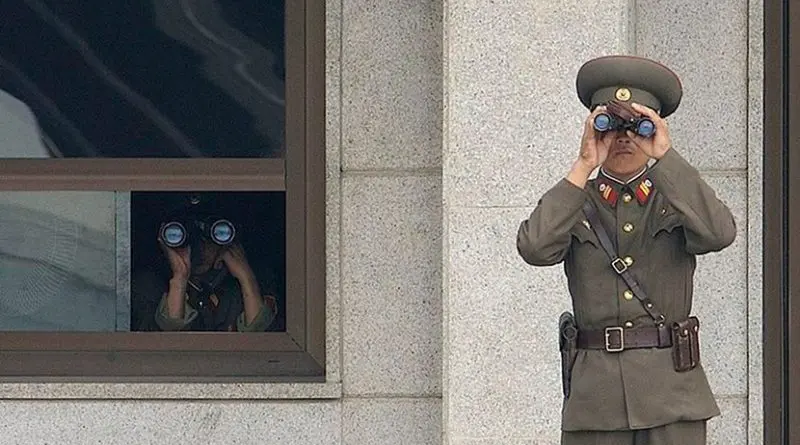North Korea’s Desired ‘New Normal’ – Analysis
By Observer Research Foundation
What is the primary motivation of the regime to make such a show of its crude strength?
By Pinaki Bhattacharya
Everyone studying the morbid science of nuclear weapons and their missile delivery systems knows Siegfried Hecker. He was the former director of the Los Alamos labs that designed the new US warheads during the Barack Obama Administration. He is the only American scientist to have visited the Yongbyon nuclear complex of North Korea.
Hecker, who is known as a plutonium scientist, gave an interview to the Bulletin of Atomic Scientists (BAS) on the North Korean capacities. He said on 15 May 2017: “They (North Koreans) have also demonstrated over many years that they can launch relatively short-range missiles reliably. We have to assume they can mate the warheads and the missiles so as to reach targets anywhere in South Korea and Japan.”
Asked what is the average yield of the top line atomic weapons Pyongyang has, Hecker said they would be in the range 15-20 kilotons i.e. a kind of a bomb that was dropped on Hiroshima.
Is that a deterrent enough against the United States interests in the region? No, is the usual response. For, both Japan and South Korea are under the ‘nuclear umbrella’ of the US, codified under formal security treaties between them.
What has proved a game changer in the whole situation was the 4 and 28 July tests that even Hecker considered to be Inter Continental Ballistic Missiles (ICBMs).
According to the Korean Central News Agency (KCNA), North Korea’s state news outlet, the most recent Hwasong-14 missile reached an altitude of 3,725 kilometres (2,315 miles) and flew a distance of 998 kilometres (620 miles) for 47 minutes before landing in the water off the Korean peninsula’s east coast, close to Japan.
Hecker was interviewed again earlier this month — on 7 August. He categorised the missile launches of Pyongyang on 4 and 28 July as ‘ICBMs.’ In fact, he had told the BAS interviewer that he did not think the longer range missiles were ready yet to join the active arsenal of North Korea.
Moreover, he had pointed out that the re-entry vehicle of the ICBM needs the ability to withstand very high degrees of temperature in the endo-atmospheric phase of the missile’s ballistic path. Kim Jong Un’s scientists might not have been able to master the technology to house the nuclear warhead on the missile. On top of that, if the missile had to have a hit on a designated target, by fooling sophisticated missile defence systems like THAAD and Aegis, they needed to have advanced re-entry vehicles, possibly in a guided mode in the final phase.
The nuclear warheads also require a very delicate machining process, when both the weight and volume get to stage where they can be fitted on a missile tip.
In the earlier interview of May this year, Hecker had contemplated about the plutonium and uranium enrichment process of making nuclear warheads. So, the total number of ready weapons can be calculated between 15-20. For, the availability of natural uranium (U-238) limits the number of warheads a country can have.
Having said that, it remains a fact that after North Korea moved out of the NPT, they could have redirected plutonium and uranium from their power generation reactors. Even that would be a difficult process because of the limits of technology and trained man-power pools for separating plutonium and U-235 from a nuclear reactor based on fission reactions, and that too in a world where there are severe sanctions on technology and training.
What remains in the chain of decision-making then is the mental state of Kim Jong Un, the North Korean Dear Brother — the son of Dear Leader Kim Jong Il — who would give the codes for launch. Is he a rational actor or not? There is no reason to doubt that, based on one simple fact that the nation’s gross domestic product rose by four per cent, thus reflecting a fairly well-oiled administration. Besides, Hecker himself had certified that young Kim is of sound health and mind, in the May interview.
Finally then, what is the primary motivation of the regime to make such a show of its crude strength?
According to me, the reasons are two: one, North Korea wishes to negotiate but do that from a position of relative strength — the nuclear weapon tipped missiles are for guaranteeing regime survival and sustenance.
And two, North Korea wishes to emerge from its ‘splendid isolation,’ through a carefully calibrated process of joining the mainstream of nations. That is the desired ‘new normal’ for the Hermit Kingdom. The question: Is the world ready for it?

